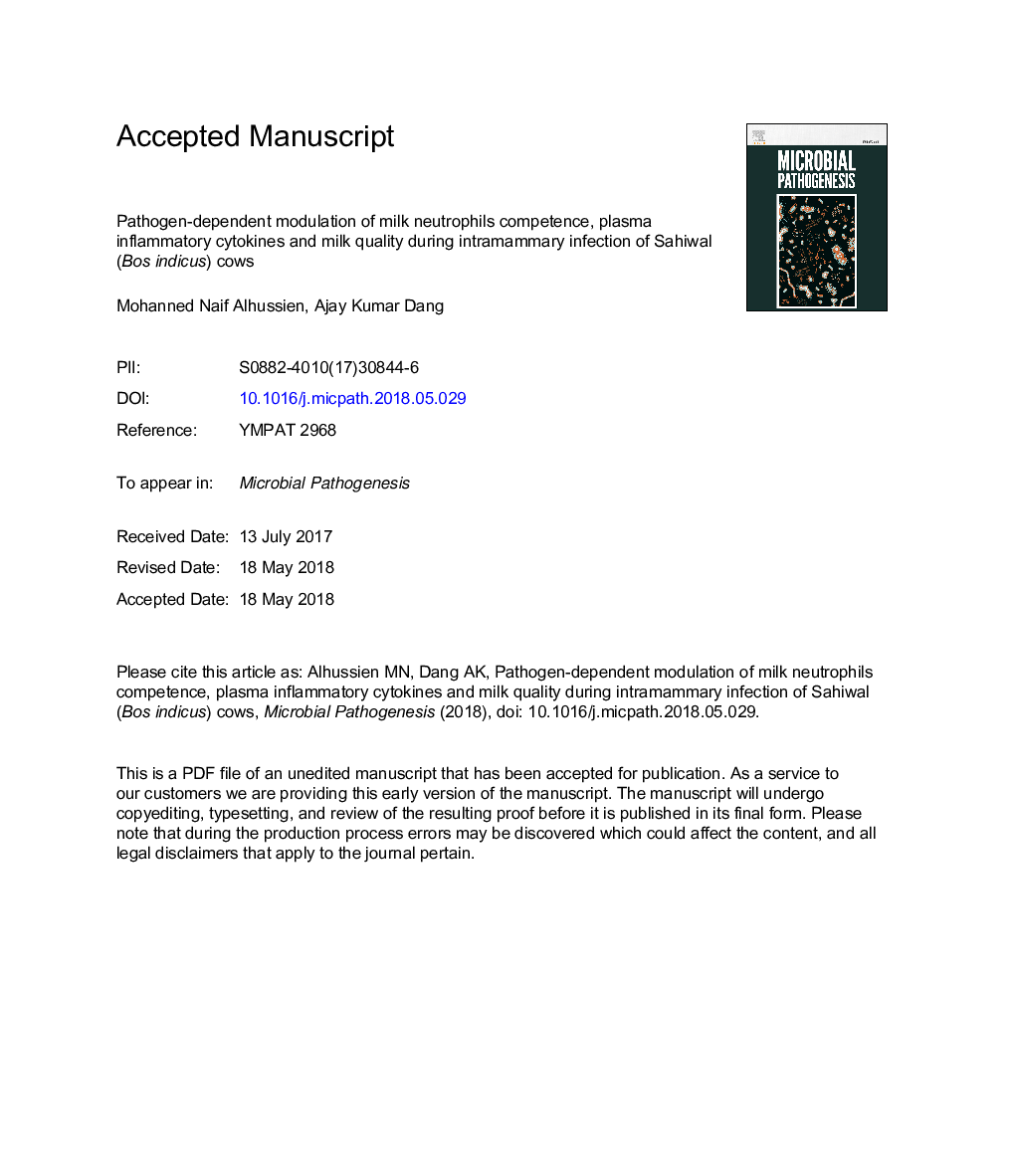| Article ID | Journal | Published Year | Pages | File Type |
|---|---|---|---|---|
| 8749350 | Microbial Pathogenesis | 2018 | 31 Pages |
Abstract
The aim of the current study was to investigate the responses of milk neutrophils and plasma inflammatory cytokines to various mastitis pathogens and subsequently on milk composition. Milk was collected from healthy (nâ¯=â¯10) and clinical mastitis indigenous Sahiwal cows naturally infected either with gram-positive bacteria mainly S. aureus (nâ¯=â¯10) and Strep. agalactiae (nâ¯=â¯10) or with gram-negative bacteria, E. coli (nâ¯=â¯10). Phagocytic activity of milk neutrophils decreased in all mastitis cows with the lowest values recorded during gram-positive bacterial infections. Maximum plasma cortisol levels were observed in cows infected with gram-positive bacteria and were positively correlated with the milk neutrophils percentage and negatively correlated with the phagocytic activity of neutrophils and expression of glucocorticoid receptor. The plasma concentrations of IL-2 and IL-8 increased in all mastitis groups with maximum values recorded during E. coli infections. Unlike gram-negative bacterial infections, gram-positive bacterial infections evoked a minimal tumor necrosis factor-α (TNF-α), and IL-6 response. Milk somatic cell counts, fat, protein, pH and electrical conductivity increased in mastitis cows with the highest values exhibited by Strep. agalactiae infection. The expression of chemokine receptors (CXCR1, CXCR2), IL-8 and CD11b was maximum in mastitis neutrophils infected with E. coli. The expression of glucocorticoid receptor (GRα) decreased in all mastitis groups with the lowest values were found in S. aureus infection. Among the various mastitis pathogens, Strep. agalactiae showed maximum adverse effect on milk quality. Attenuated neutrophils, TNF-α and IL-6 response in cows infected by gram-positive bacteria may contribute to the establishment of chronic mastitis.
Related Topics
Life Sciences
Immunology and Microbiology
Microbiology
Authors
Mohanned Naif Alhussien, Ajay Kumar Dang,
